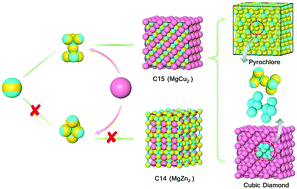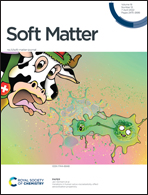Colloidal cubic diamond photonic crystals through cooperative self-assembly†
Abstract
Colloidal cubic diamond crystals with low-coordinated and staggered structures could display a wide photonic bandgap at low refractive index contrasts, which makes them extremely valuable for photonic applications. However, self-assembly of cubic diamond crystals using simple colloidal building blocks is still considerably challenging, due to their low packing fraction and mechanical instability. Here we propose a new strategy for constructing colloidal cubic diamond crystals through cooperative self-assembly of surface-anisotropic triblock Janus colloids and isotropic colloidal spheres into superlattices. In self-assembly, cooperativity is achieved by tuning the interaction and particle size ratio of colloidal building blocks. The pyrochlore lattice formed by self-assembly of triblock Janus colloids acts as a soft template to direct the packing of colloidal spheres into cubic diamond lattices. Numerical simulations show that this cooperative self-assembly strategy works well in a large range of particle size ratio of these two species. Moreover, photonic band structure calculations reveal that the resulting cubic diamond lattices exhibit wide and complete photonic bandgaps and the width and frequency of the bandgaps can also be easily adjusted by tuning the particle size ratio. Our work will open up a promising avenue toward photonic bandgap materials by cooperative self-assembly employing surface-anisotropic Janus or patchy colloids as a soft template.



 Please wait while we load your content...
Please wait while we load your content...